#salix nigra
Explore tagged Tumblr posts
Text

We have a Black Willow (Salix nigra) on the property!
A native tree. A big fella too.
15 notes
·
View notes
Text
Moth of the Week
Hornet Moth
Sesia apiformis
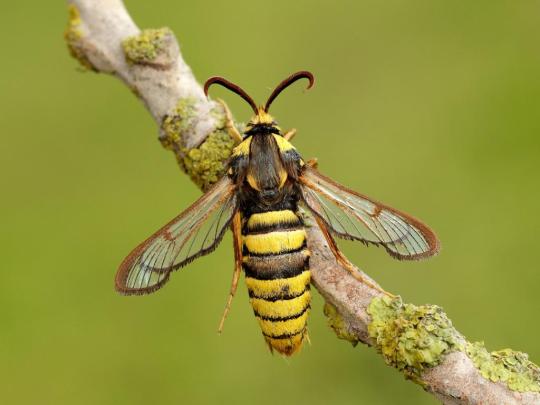
The hornet moth is a part of the family Sesiidae or the family of clearwing moths. They get their common name predictably from how they mimic the appearance of the hornet. This type of mimicry is called Batesian mimicry, which is when a harmless species mimics the appearance of a unpalatable or defended species to protect themselves from predators. It was first described in 1759 by Carl Alexander Clerck under the name Sphinx apiformis.
Description This moth uses what called Batesian mimicry to resemble the hornet so predators do not want to eat it for fear of being stung. The adult moths have clear wings with yellow and striped black bodies. The number of stripes varies, females have two stripes while males have three. They are about the size of a hornet with the same jerky flight pattern when disturbed. The only difference is the hornet moth has more yellow and lacks the waist between the abdomen and the thorax.
Wingspan Range: 34 - 50 mm (≈1.34 - 1.97 in)
Females are larger than males
Diet and Habitat The larvae eat several species of poplar trees such as apsen (Populus tremula), black poplar (Populus nigra), and goat willow (Salix caprea). They prefer trees surrounded by heavy vegetation as those kinds show more evidence of infestation from larvae burrowing into trees. Adults do not eat.
This moth ranges over mainland Europe, Great Britain, and parts of the Middle East. It had also been introduced to America and Canada. They prefer open habitats such as parks, hedgerows, golf courses, quarries, fens, pond edges, and pits.
Mating The female moths attract males using special posterior glands to emit pheromones, usually soon after emergence. The male doesn’t seem to have any courtship behaviors as the two sexes are likely to begin mating as soon as they come into contact. Both males and females mate multiple times with different partners before the female beings laying her eggs.
Females prefer to lay eggs on old or isolated trees surrounded by vegetation. Females can lay from hundreds to thousands of eggs and exhibits no parental care. When comparing the number of eggs laid to the number of adults emerging per year, it is clear the large number of eggs laid is to make up for the large mortality rate between the egg and adult stages.
Predators This species of moth is primarily preyed on by magpies and great tits. Interestingly, these birds do not eat hornets despite eating this moth. An explanation for this is since these birds don’t eat hornets, the mimicry is less effective as they have any bad experiences with insects of this coloration. In fact, it can be suggested that the black and yellow coloration has the opposite effect: once the birds realize this moth is harmless and can be easily seen, they begin to actively seek them out.
Fun Fact The hornet moth is seen as a pest in the eastern United Kingdom due to a large dieback of poplar trees from larvae burrowing into them. However this dieback is not inherently caused by the larvae but instead from drought and human influences, which the larvae increase the effect of.
(Source: Wikipedia, Butterfly Conservation)
#libraryofmoths#animals#bugs#facts#insects#moth#mothoftheweek#hornet moth#Sesia apiformis#Sesiidae#lepidoptera
230 notes
·
View notes
Text

There is a swamp willow (Salix nigra) at the edge of the yard that started slowly falling over several years ago. This type of willow has an unusual life strategy of getting old and cranky, slowly keeling over sideways near a stream, eventually getting low enough to start growing extra roots along what was formerly the trunk, and the branches on the side turn into new trunks in a small clonal colony. This one has several dead branches that are growing lovely shelf fungi.
Here's a photo from 2020, it has collapsed a lot more since then. As long as it doesn't completely block the little stream, I'm just going to let it do its thing.
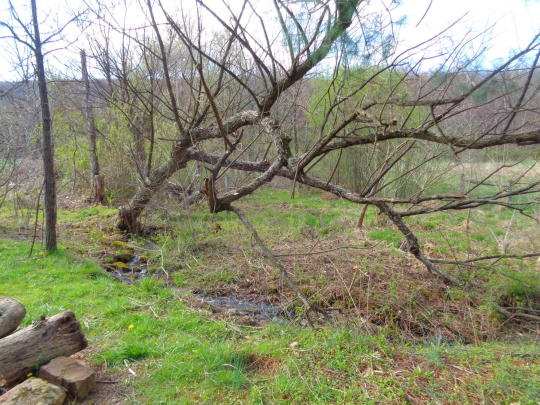
9 notes
·
View notes
Text
Herb of the Month - Willow
This post will have the medicinal profile and magical correspondences. This is done via years of research and having spent quite a bit of time with it, as it is one of my favorite trees. I've found her to be soothing and relaxing, a real comfort to be around. This may get updated over time to keep it as accurate as possible. Below the image, you will find the information. If you have any information you'd like to add or experiences you've had with it in the comments, please feel free to!
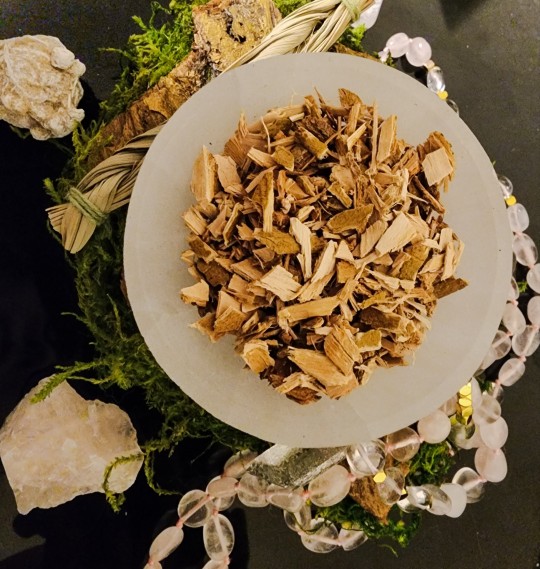
Plant name: salix alba
Planet: Moon
Element: Water
Gender: Feminine
Healing/medicinal properties:
• What willow is best known for is a chemical called salicylic acid, which is almost identical to aspirin. It is still a popular alternative for naturopaths to prescribe today. As you can imagine, it has pain-relieving properties.
• Reduces inflammation.
• Often prescribed for arthritis and joint pain by licensed professionals. Work with a naturopath to learn what dosage you need as well as how to best take it. Also used for menstrual cramps, if you want to speak with them about using it for that too.
• Known to reduce fevers.
• Helps gum & tonsil inflammation (use decoction).
• Black willow (salix nigra) was used as an aphrodisiac & sexual sedative. It would arose its user.
• Goat willow (salix caprea) was/is used for whooping cough and indigestion. Also used as an antiseptic and disinfectant.
• Sometimes used for weight loss.
Main magical properties:
• Healing: physically & emotionally.
• Love/romance.
• Fertility.
• To conjure spirits.
• Releasing energy.
• Develop psychic abilities and increase intuition.
• Dreamwork.
• Moon magic.
• Curses.
Spell uses:
• Place in a dream sachet to lucid dream or astral project. Often used for dream scrying. Add lavender or skullcap in it (or both) to aid you even further in this!
• Use in any kind of healing ritual. You can also make your own tinctures, salves, or teas to not only harness the physical benefits but bring deep healing. Charge on full moons, by a body of water if possible. If not, use the water element indoors!
• Use branches to make a powerful wand! Preferably fallen ones. Leave an offering and still ask permission to take it, out of respect.
• Carrying the leaves in a sachet attracts love.
• You can sprinkle it around the perimeters of the home and around the rooms to ward off/protect from evil.
• Traditionally, besoms were made from branches that were left on the ground. Use this to make your own! Again, ask permission and leave offerings.
• You can use this in fertility rituals. Placing it under the bed helps, or in a sachet under the pillows when trying to conceive.
• Some use the branches as divining rods. The rods may also be used for binding magic.
• Aids in ancient studies. It likes to teach its user by removing any blockages, especially emotional ones so they can retain more information, from a clearer headspace.
• Use for working through grief. I encourage making a charm for this, as it brings about a comforting energy during these difficult times.
• On another note, willow has a long history of being used in curses, especially revolving around death or causing someone grief.
• From author and herbalist Corrine Boyer: "Willow was thought in some parts to be protected by the devil and if one tied a knot in a young willow tree, and renounced their baptism while sitting under it, the devil would grant them supernatural powers. Polish folklore taught that the willow tree was the Devil's home and refrained from cutting it down for that reason."
Note: Some of these correspondences might not resonate with you, and that is okay. I've found many authors and researchers that I do not connect with their UPG on a certain herb, but I still make note of it (but put, off to the side, that it is their experience). You will experience the same things as you look into information on an herb you are seeking to understand. The best thing to do is work with the plant itself, develop a relationship, and you will find what resonates.
Another note: this is NOT a substitute for modern medicine. If you want to use it medically, see a licensed naturopath and have them work with your doctor(s) so they are all on the same page & can provide the best treatment possible. No herb is the cure for everything. Don't substitute for needed medications.
#witchcraft#witch#green witch#healing#herbs#herbalism#willow#witchblr#magical correspondences#green witchcraft#digital grimoire#don't forget to form your own opinions
67 notes
·
View notes
Text

Boudoir with Salix Nigra
3 notes
·
View notes
Text
Willow basket weaving is an age-old craft that’s as beautiful as it is functional. From storage solutions to decorative pieces, willow baskets have been used by cultures around the world for centuries. If you’re in Texas and looking to dive into this timeless craft, choosing the right willow plants is essential. Texas’s unique climate means not all willow varieties thrive here, so selecting the best ones for durability, growth rate, and flexibility is key.
In this guide, I’ll walk you through the top willow types that grow well in Texas and are perfect for basket weaving. For a more detailed look and additional growing tips, check out my in-depth article here.
Why Willow?
Willow is a go-to for basket weaving for a few reasons:
Flexibility and Durability: Willow branches are pliable and don’t easily break, which makes them ideal for weaving.
Fast Growth: Willows are quick to grow and often regenerate after a harvest, providing a sustainable supply for ongoing weaving projects.
Aesthetic Appeal: The natural colors of willow add a unique, earthy quality to baskets, giving them an artisanal look.
For Texans, finding varieties that can tolerate local temperatures and soil conditions is important. Fortunately, a few willow types not only survive but thrive in Texas!
What to Look for in a Willow for Basket Weaving
Before diving into specific varieties, let’s go over a few must-have characteristics for weaving-friendly willows.
Strong, Thin Shoots: Ideally, you want willows with straight, slender branches. This makes weaving easier and yields tighter, more compact baskets.
Adaptability to Texas Climate: Summers in Texas are hot and often dry. Choosing heat-tolerant willow varieties ensures your plants thrive year-round.
Fast Regrowth: Some willows grow back quickly after a cut, which means you can maintain a regular harvesting schedule.
If you’re ready to try basket weaving or expand your willow collection, here are the best types for Texas.
Top Willow Varieties for Basket Weaving in Texas
1. Black Willow (Salix nigra)
Black Willow is native to the southeastern United States, making it well-suited to Texas’s varied climate. Known for its durable wood, Black Willow is a favorite for making sturdy, long-lasting baskets.
Advantages: It’s resilient, grows quickly, and adapts well to both moist and dry soils.
Growing Tip: Plant near a water source if possible, as Black Willow prefers moist environments. However, it can tolerate drier soil, making it versatile for Texas gardens.
2. Dappled Willow (Salix integra)
The Dappled Willow, with its striking, variegated leaves, brings both beauty and function to basket weaving. While it’s more decorative than other willow types, it also produces great weaving material.
Advantages: Beautiful foliage, relatively compact size, and flexible branches.
Growing Tip: Dappled Willow thrives in partial shade to full sun. In Texas, partial shade can protect it from the hottest summer days.
3. Sandbar Willow (Salix interior)
The Sandbar Willow is incredibly hardy and drought-resistant, making it an excellent choice for the Texas heat. It’s known for producing straight, narrow branches that are ideal for weaving.
Advantages: Tolerates drought, offers straight shoots, and has a fast growth rate.
Growing Tip: Sandbar Willow does well in poor soil, so it’s a great option if you’re working with challenging ground conditions.
4. White Willow (Salix alba)
White Willow is another top choice for basket weaving, favored for its long and flexible shoots. This willow is slightly more sensitive to Texas’s heat but performs well with the right care.
Advantages: Excellent flexibility, long branches, and fast growth.
Growing Tip: Plant in a location where it gets morning sun but some afternoon shade to protect it from extreme heat.
5. Weeping Willow (Salix babylonica)
The Weeping Willow is a classic for its elegant, drooping branches, which are also quite useful for weaving projects. Though not native to Texas, it can thrive with attentive care and regular watering.
Advantages: Known for long, flexible branches, which are great for making larger baskets.
Growing Tip: Ensure the soil stays consistently moist, as Weeping Willows can be prone to drying out in hot Texas summers.
Tips for Growing Willow in Texas
While willows are relatively low-maintenance, here are some tips to help them thrive in Texas:
Plant in Spring: Early spring is the best time to plant willows. This gives the plant time to establish roots before summer heat hits.
Water Regularly: Even drought-tolerant varieties benefit from consistent watering, especially during dry spells.
Choose the Right Soil: Willows prefer loamy or sandy soils that drain well, though some, like Sandbar Willow, can handle poorer soil conditions.
Prune Annually: To encourage new growth and maintain flexible branches, cut back the willow each winter. This also keeps the plant manageable and ready for weaving.
For more growing tips and willow care advice, see my full article here.
Ready to Start Weaving?
Choosing the right willow variety can make all the difference in your basket weaving projects. Not only will you have an abundant supply of materials, but you’ll also get to enjoy the beauty of willow in your garden. If you’re ready to explore more about basket weaving and growing willows, I invite you to check out my comprehensive guide with extra tips, tricks, and inspiration here.
Happy weaving!
0 notes
Text
Nine. There are nine species of willows native to Kentucky. Salix amygdaloides, S. caroliniana, S. discolor, S. eriocephala, S. interior, S. humilis, S. occidentalis, S. nigra, and S. sericea. And Ohio has like twice as many kinds of willow!
there are so many plants in my area that I seem to never stop Realizing A Plant Exists for the first time. But like it's not that I'm actually hearing about them for the first time, it's like my brain is always taken up with processing the existence of plants and has to wait to make room for new plant knowledge.
Like maybe last year i was busy comprehending how many woodsorrels and oaks there are and the knowledge of willows would drift past, and it was like not now, I can't learn about that i'm pretty sure i'm not ready for it and now i'm like okay fuck me up how many willow species are in kentucky
289 notes
·
View notes
Text
Large Trees for Large Zone 7 Landscapes
Need help choosing a massive tree species for your large landscape? Knowing which tree species grow to larger proportions will help you fill vast areas of your landscape with shaded recreational areas.

thetreecareguide.com gathered species, planting, and care information for some of the more massive trees hardy to large zone 7 landscapes.
1. Weeping Willow (Salix babylonica)
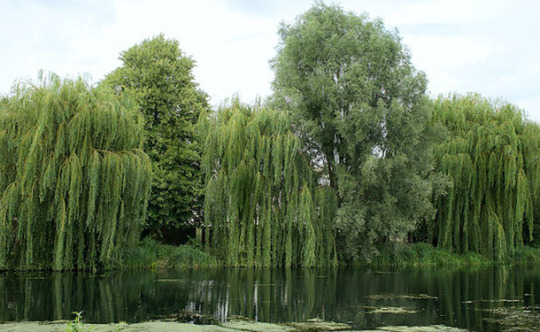
Weeping willows are recognized for their long, drooping branches and delicate leaves. They are typically found near fresh-water sources, as they have a strong affinity for moisture and thrive in damp soil. The weeping willow’s growth rate is fast, with new growth appearing each year. They can reach a mature size of 40 to 50 feet in height and spread, with a broad canopy that provides significant shade.
Weeping willows are hardy in USDA zones 6 through 8 and are easy to care for. They require consistent moisture to thrive, so they should be watered regularly. This tree species benefits from fertilization in the spring and pruning in the winter to maintain shape and encourage healthy growth. The weeping willow is a stunning addition to any large landscape and offer a peaceful, calming presence with their gentle sway in the breeze.
2. Ginkgo Biloba (Ginkgo biloba)
Ginkgo Biloba trees or Maidenhair trees are a unique and ancient species that can live for over a thousand years. They are easily recognized by their fan-shaped leaves turning bright yellow in the fall. These trees have a moderate growth rate and can reach a mature size of 80 feet high and a 50-foot spread. They are hardy in USDA zones 3 through 8 and are tolerant of various soil types as long as they are well-drained.
Ginkgo Biloba trees require minimal care and maintenance, ideal for low-maintenance landscapes. They prefer full sun to partial shade and should be watered regularly. They do not require fertilization, but occasional pruning will help maintain their shape and promote healthy growth. Ginkgo Biloba trees are prized for their medicinal properties (the foliage is believed to have beneficial effects on memory and cognition).
3. American Beech (Fagus grandifolia)
American Beech trees are a beautiful and stately deciduous species native to eastern North America. They have a slow to moderate growth rate and can reach a mature size of 70 to 80 feet in height and spread. They are hardy in USDA zones 3 through 9 and prefer well-drained soil rich in organic matter.
Beech trees need minimal care and maintenance once established. They prefer partial shade to full sun and should be watered regularly. They thrive from an annual compost application around the tree’s base. Pruning is typically only necessary to remove dead or diseased branches. Beech trees are highly valued for their attractive foliage, which turns a golden brown in the fall. They are also an important food source for birds and small mammals.
4. Southern Magnolia (Magnolia grandiflora)
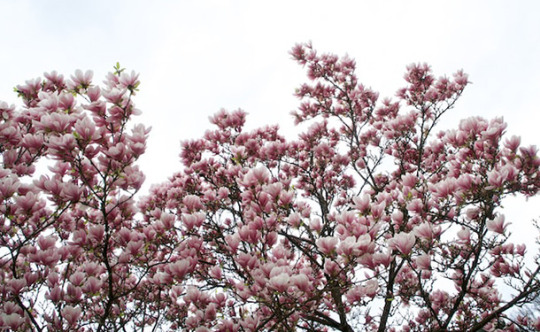
Magnolia Grandiflora trees or Bull Bay are a stunning evergreen species native to the southeastern United States. They are known for their immense, fragrant white flowers blooming in the summer and their glossy, leathery leaves remaining green year-round. They have a moderate growth rate and can reach 60 to 80 feet in height and spread at maturity. They are hardy in USDA zones 7 through 9 and prefer well-drained soil rich in organic matter.
Magnolia Grandiflora trees require minimal care and maintenance once established. They prefer full sun to partial shade and should be watered regularly. They do not require fertilization, but occasional pruning will help maintain their shape and promote healthy new growth. Magnolia Grandiflora trees are highly valued for their ornamental beauty and are often used as specimen trees in landscaping.
5. Black Walnut (Juglans nigra)
[caption id="attachment_693" align="aligncenter" width="610"]

Photo by Sue Lowndes[/caption]
Black walnut trees, or Juglans nigra, are a large and long-lived species native to eastern North America. They are known for their valuable wood and edible nuts, which have a distinctly rich buttery flavor. They have a moderate to fast growth rate and can reach 70 to 100 feet with a 50 to 75-foot spread at maturity. They are hardy in USDA zones 4 through 9 and prefer well-drained, moderately fertile soil.
Black walnut trees require minimal care and maintenance once established. This tree species prefers full sun to partial shade and should be watered regularly. They benefit from an annual compost or organic fertilizer application around the tree’s base. Pruning is typically only necessary for dead or diseased branch removal. Black walnut trees are highly valued for their wood, used for furniture, flooring, and other applications.
Large Trees for Vast Landscapes
In this article, you discovered species, growing, and care information for some of Zone 7’s largest tree varieties for your vast, empty landscape.
Identifying larger trees to help you add dimension and interest to your landscape will give you more shaded areas and potentially increase your home’s curb appeal.
Without larger trees in your landscape, you will have excess barren areas unprotected from the sun’s harsh rays and violent weather.
Sources: trees.umn.edu/weeping-willow-salix-alba snr.unl.edu/data/trees/identification/basictree.aspx?sid=65 uky.edu/hort/American-Beech plants.ces.ncsu.edu/plants/magnolia-grandiflora/ nfs.unl.edu/woody-plants/black-walnut
For the original version of this article visit: https://www.thetreecareguide.com/large-trees-for-zone-7-landscapes/
1 note
·
View note
Photo

🌈 #BT21 Minini Essence Sheet Mask 7ea - 💖Cooky: Glowing (Kombucha + Lactobacillus) ❤️Tata: Elasticity (Hibiscus + 7 Green Vegetable extract) 💛Chimmy: Shining (Peach Flower + Sea Buckthorn) 💜Mang: Vitalizing (Prune + Mango) 🤎Shooky: Pore (Red Pine Flower + Camellia) 🤍RJ: Calming (Dokudami + Aloe + Salix Nigra) 💙Koya: Moisturizing (Lavender + Kiwi) - 💆🏻♀️ Available at: kstarmx.com - #bts #bangtanboys #bangtan #taehyung #btsv #parkjimin #jungkook #jimin #bt21cooky #bt21tata #jhope #bt21mang #jeonjungkook #ABRASAX #bt21collection #kimnamjoon #kimtaehyung #minyoongi #bt21collector #btsjin #btssale #btscollector #bt21merchandise #bt21shop #bt21merch #bt21minini (at 서초동) https://www.instagram.com/p/CljqxmSSYfu/?igshid=NGJjMDIxMWI=
#bt21#bts#bangtanboys#bangtan#taehyung#btsv#parkjimin#jungkook#jimin#bt21cooky#bt21tata#jhope#bt21mang#jeonjungkook#abrasax#bt21collection#kimnamjoon#kimtaehyung#minyoongi#bt21collector#btsjin#btssale#btscollector#bt21merchandise#bt21shop#bt21merch#bt21minini
1 note
·
View note
Text
REN Clean Skincare - AHA Facial Toner - Glow Delivers 7 Skin-Resurfacing Benefits - Pore Reducing BHA and Exfoliating Lactic Acid for a Smoother, Brighter and Even Skin Tone
REN Clean Skincare – AHA Facial Toner – Glow Delivers 7 Skin-Resurfacing Benefits – Pore Reducing BHA and Exfoliating Lactic Acid for a Smoother, Brighter and Even Skin Tone
Price: (as of – Details) Ingredients : Aqua (Water), Sodium Lactate, Lactic Acid, Heptyl Glucoside, Potassium Azeloyl Diglycinate, Triethyl Citrate, Glyceryl Caprylate, Salix Nigra (Willow) Bark Extract, Benzoic Acid, Citrus Nobilis (Mandarin) Peel Oil, Citrus Aurantium Dulcis (Orange) Flower Oil, Citrus Grandis (Grapefruit) Peel Oil, Citrus Tangerina (Tangerine) Peel Oil, Heptanol, Parfum*…

View On WordPress
0 notes
Text


Today I planted willow cuttings (Salix nigra) that will eventually add an extra layer of shade for the rabbit barn. I got a dozen 12" long cuttings from eBay, and they'd already begun growing roots by the time they arrived! I set them outside for a few days to acclimate, in a jar of water, then got them in the ground today.
The chickens would absolutely destroy these, so I constructed a temporary barrier out of tomato cages and pieces of the old garden fence. It won't be necessary once the plants are well established.
5 notes
·
View notes
Photo









Pearl’s Fen, Greene Co. Ohio
1 Salix myricoides A post glaciation, mainly boreal species left over as a fen remnant. Usually, these look different but the wide leaves, dentation, and glaucous shimmer are decent indications if the red stems aren’t clear enough.
2 Chelone glabra, a wetland obligate species, a close relative to Penstemon and a host species for Baltimore checkered spot butterfly, a rare species in Ohio.
3. Salix nigra, a commonplace species in any ditch or wetland in any form, more present ecologically as a riparian species or floodplain/sandbar stabilizer.
4. Andropogon gerardii?? in my fen, it’s more likely than you think!!? Free Pc Check.com, Blue Willow, and the usual Spotted Joe Pye suspect seen at the scene of the crime as well.
#Salix myricoides#myricoides#chelone#salix#chelone glabra#salix nigra#andropogon gerardii#andropogon#botany#plantblr#wildflowers#ohio
13 notes
·
View notes
Photo

Native black willows along a meadow stream.
129 notes
·
View notes
Photo

SALIX NIGRA Black-willow SALIX NIGRA Black-willow Has a positive action on the generative organs of both sexes Hysteria and nervousness.
0 notes
Photo

The leaning swamp willow has shifted from its acute angle two years ago to nearly horizontal.

It is, however, somewhat propped up on two branches that are holding it from collapsing further. Lots of swamp willows (Salix nigra) collapse sideways as a reproductive strategy. Once the trunk is on the ground new roots form along it, and the branches that are in the air become trunks of new trees. It’s an interesting process. How many trees just say, “I’m tired, going to lie down and have a permanent nap, now.”? Hmm. Goals, maybe.
29 notes
·
View notes
Text
Willow Correspondences & Associations
There are many different types of willows, so we'll do a speedrun of the common and native sorts in Missouri.
Native:
salix amygdaloides (peachleaf willow)
salix caroliniana (coastal plain willow)
salix eriocephala (heart-leaved/missouri river willow)
salix nigra (black willow)
salix sericea (silky willow)
Common:
salix babylonica (babylon/weeping willow)
salix discolor (american pussy/glaucous willow)
salix exigua (coyote/narrowleaf/sandbar willow)
ASSOCIATIONS
Animals
bee
crane
deer
dove
hare
hawk
owl (snowy)
Comets & Planets
Moon [especially bark, white, white bark, wood]
Neptune
Venus
Deities & Figures
Artemis (Greek)
Athena (Greek)
Belenus (Celtic)
Brigid (Irish)
Ceres (Roman)
Cerridwen (Welsh)
the Dagda (Irish)
Danu (Irish)
Demeter (Greek)
Diana (Roman)
Hekate (Greek)
Hera (Greek)
Hermes (Greek)
Horned God (Wiccan)
Ishtar (Akkadian, Assyrian, Babylonian)
Juno (Roman)
Loki (Norse)
Luna (Roman)
Mercury (Roman)
the Morrigan (Irish)
Osiris (Egyptian)
Persephone (Greek)
Poseidon (Greek)
Proserpina (Roman)
Ran (Norse)
Rhiannon (Welsh)
Saturn (Roman)
Selene (Greek)
Skadi (Norse)
Thanatos (Greek)
Thoth (Egyptian)
Triple Goddess (Wiccan)
Zeus (Greek)
Elements
fire
water
Entities
elves
fae
Helike (Greek)
spirits
spirit guides
water sprites
Genders
femininity [especially wood]
masculinity
nonbinary genders
trans femininity
trans masculinity
Zodiac Signs
Aries
Capricorn
Pisces
Sagittarius
Taurus
CORRESPONDENCES
adaptability
adjusting to new situations [leaves]
afterlives/otherworlds
astral travel
attraction
attraction of love
beauty [wood]
bereavement [bark, leaves]
besoms/brooms
bewitchment
binding [especially white, white wood]
blessing [especially white wood]
breaking spells
business blessing [bark, leaves]
calming
change
cleansing [especially bark, red, red bark]
clearing [red bark]
combination
communication [especially white]
concealment
conjuring spirits [white bark]
consecrating
courage
creativity [especially white, wood]
death
divination [especially white, wood]
dowsing [especially branches]
dream work [especially white]
dysphoria relief
empathy
empowerment
enchantment
energy [especially black wood]
enhancing energy [black wood]
fertility
funerary practices
gentleness
glamours
grief
growth
harmony
healing [especially bark, black wood, white bark, white wood]
health
home blessing
inspiration [especially white]
intuition [especially white]
knowledge
learning [especially wood]
love [especially white, white bark]
meditation [red bark]
melody
mental clarity
mental focus [bark]
mourning
peace
personal empowerment
potions
prophecy
protection [especially white]
protection from evil [especially white wood]
protection from malevolent spirits [especially bark]
protection from negativity [especially bark, white wood]
psychic abilities [especially white]
psychic work
purification [especially red bark]
rain magic
recovering from loss/sorrow
renewal
repelling love [decayed, rotted]
rites of passage [white]
scrying [white]
secrecy
sex
sexuality
shapeshifting
slowing healing [decayed, rotted]
spirit communication
strength [especially white]
tranquility
turning a situation around
warding off evil
warding off negative energy
weaving
wishes

#jasper post#missouri magic#missouri magick#missouri pagan#missouri paganism#missouri witchcraft#missouri witch#missouri#correspondences and associations#herbs and other plants#willow
24 notes
·
View notes